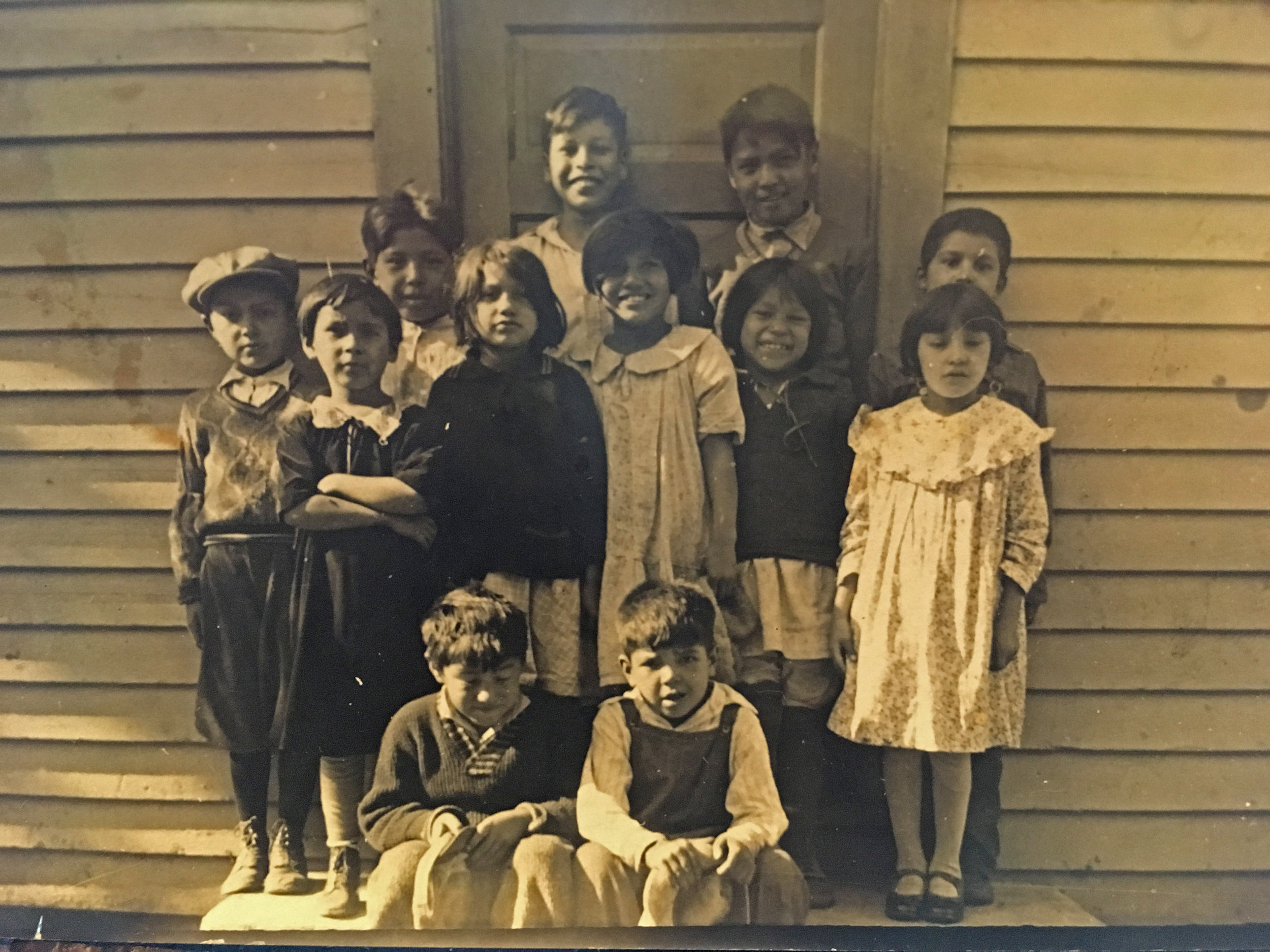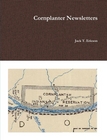John Mix Stanley, The Trial of Red Jacket, 1869, oil on canvas
The officers and member of the Iroquois Genealogy Society have curated a selection of readings that we have found most useful while researching our shared ancestry. When available this page links to the most economical book retailer for each title.

Children attending School #5, Cattaraugus Territory- Unknown Date
IGS Recommended Print Resources
Paperback
This book is a reprint of the Cornplanter Descendants Association Newsletters originally published 1994 to 2005. Jack T. Ericson is the genealogists and editor of the series. The book includes a new name index not previously available. This collection is a priceless for Cornplanter descendants of the Seneca Nation of Indians. The land given to Cornplanter by the Commonwealth of Pennsylvania in the 1790s was flooded by the Kinzua Dam built in 1965.
This reference book compiles all of the treaties of the Seneca people with the United States from 1784 to 1867. It is divided into two sections, treaties held with Senecas residing in what is now New York and Ohio. Current and future generations of Senecas and Americans should be aware of these treaties and their significance. The 1794 treaty remains in effect today in perpetuity. Genealogists will appreciate the plethora of Seneca signatures on these documents. Every library should have a copy of this book.
This is a transcription of the Draper manuscript, Series 4 S. This provides a unique native view based on interviews with Seneca Indians and a manuscript of the significant Seneca leader, Governor Blacksnake. Non-Indians are included in Draper's interviews in western Pennsylvania, New York & Ohio. This is a cultural find for historians and genealogists.
A variety of individuals, libraries, and museums interested in Native American genealogy will find this work informative. This book is the last of three volumes intended to be genealogical reference guides for those seeking to identify a name among the Indians who live in the state of New York. This volume contains information about the Cayuga, Munsee (Delaware), Mohawk, Onandaga, Oneida, Seneca, and Shinnecock/Montauk/Poosaptuck. Secondary alphabetical surname lists are included for related Indian groups in Canada, Indian Territory (Oklahoma), and Wisconsin. Topics in the volume include: basic Native American research sources; reservation and museum information; bibliography references; using the Persi File; using the Accelerated Indexing System; the New England Society; using the Family History Library; using the International Genealogy Index; emigration/immigration; and Seneca treaties. Also included are abstracts from: the 1886 Bureau of Indian Affairs censuses for all of the Six Nations Indian Reservations in New York; the 1900 U.S. Census for all of the residents of the Allegheny/Cattaragus, St. Regis, Tuscarora, and the Shinnecock/Montauk Reservations in New York; and the 1900 U.S. Census for the Quaker School for Indian Children in New York. Entries within the abstracts are arranged alphabetically. Toni Jollay Prevost received her accreditation as a Genealogy Researcher through Brigham Young University. She has also taught genealogy courses at Seminole and Daytona Beach Community Colleges in Florida.
Contains data about the Cayuga, Chippewa (Ojibway), Delaware, Mohawk, Munsee, Oneida, Onondaga, Seneca and Tuscarora who either migrated to or were natives of Ontario and Quebec, Canada. Secondary surname data is included for the Abenaki, Montauk, Nantico
by Henry B. Carrington (Author), Robert W. Venables (Introduction)
In 1892 the U.S. Census Printing Office published a report on the Six Nations in New York State which collected evidence still used today by the Six Nations to defend their legal rights. The 1892 census purported to be an objective report on the condition of the Iroquois. General Henry B. Carrington, special agent, U.S. Army (retired), was "to spend months among the Indians making careful observations respecting their various political, religious, and social meetings, their homes, health, and habits." The study, carried out at the time of the battle at Wounded Knee, was the first step in the government's plan to eliminate reservations: once land was privately held by individual Native Americans, it could be taxed. The census presented ample evidence of the Iroquois success in balancing their heritage with contemporary challenges and opportunities. The agents misconstrued their subjects' willingness to assimilate but also recognized that legally the Indians could become U.S. citizens only by renouncing their tribes. The report tried to assess―from statistics and individual accounts of traditional religious beliefs, practices, and ceremonies; of social practices and moral values; of health, property, and education―whether the Iroquois could be assimilated. In the process, it accumulated data, fascinating details, and photographs that bring history alive a century later.
by Lois Barton
A Quaker Promise Kept: Philadelphia Friends' Work with the Allegany Senecas 1795-1960 A detailed description of Philadelphia Quaker's work with the Allegany Senecas from 1795 to 1960.
by Alberta Austin
Out of Print
Available for review at the Seneca Nation Library.
Includes registers of students, staff, teachers, Indian chiefs and visitors of the school.










By Nëhdöwes Randy A. John
Paperback, 736 Pages
This book is an extensive literature survey of Seneca names and places. There are over 2,300 names and 370 Onöndowa'ga:' place names ranging from the 1600's to the 21st century. All the Presidents of the Seneca Nation of Indians are listed along with traditional leaders identified in historical literature. A list of Seneca students at the Thomas Indian School, Tunesassa Quaker School, and several years of the Cornplanter Grant School are included. Clan names and a Seneca veterans list including the Civil War, The War of 1812, and World War Two are provided as well. A brief list of Seneca adoptees is included in the appendices. There is no other publication available with these contents.